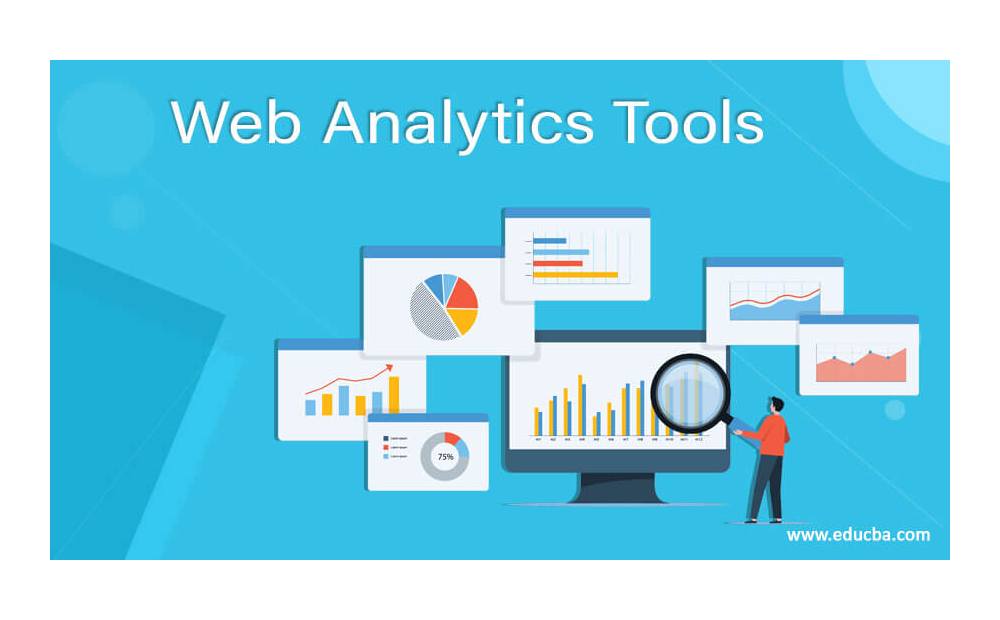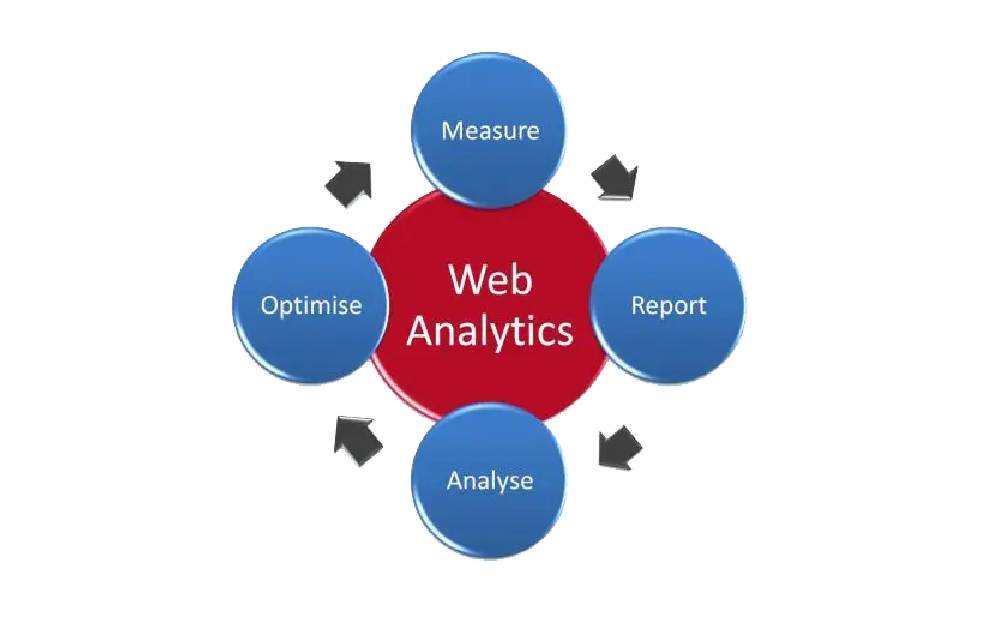what is web analytics?
Web analytics refers to the measurement, collection, analysis, and reporting of data related to website usage and user behavior. It involves tracking and interpreting various metrics and statistics to gain insights into how visitors interact with a website. Web analytics provides valuable information about website performance, user engagement, and the effectiveness of online marketing campaigns.
Key aspects of web analytics include
Data collection
Web analytics tools gather data on various aspects of website activity, such as page views, unique visitors, click-through rates, conversion rates, and more. Data can be collected using various methods, including tracking codes, cookies, and log files.
Data analysis
Once data is collected, it is analyzed to identify patterns, trends, and correlations. This analysis helps businesses understand user behavior, identify areas for improvement, and make data-driven decisions.
Metrics and key performance indicators (KPIs)
Web analytics uses metrics and KPIs to measure website performance. Common metrics include traffic sources, bounce rate, average session duration, page views per visit, and conversion rates. These metrics help evaluate the success of marketing campaigns, user engagement, and overall website effectiveness.
User segmentation
Web analytics allows businesses to segment website visitors based on various criteria such as demographics, location, behavior, or device type. This segmentation helps understand different user groups and tailor marketing strategies accordingly.
Conversion tracking
Web analytics tools enable businesses to track conversions, such as purchases, sign-ups, or downloads. This helps measure the effectiveness of marketing campaigns and optimize conversion rates.
Reporting and visualization
Web analytics tools generate reports and visualizations to present data in a clear and understandable format. These reports help stakeholders monitor performance, identify trends, and make informed decisions.
Type of web analytics
Descriptive Analytics
Descriptive analytics focuses on summarizing historical data and providing insights into what has happened on a website. It includes metrics such as page views, unique visitors, bounce rate, session duration, and traffic sources. Descriptive analytics helps businesses understand the current state of their website and user behavior.
Diagnostic Analytics
Diagnostic analytics aims to answer the question “Why did it happen?” It involves analyzing data to identify the factors that contribute to specific outcomes or trends. For example, it can help determine why certain pages have a high bounce rate or why a particular marketing campaign resulted in a spike in traffic. Diagnostic analytics helps businesses diagnose problems and understand the root causes behind certain performance metrics.
Predictive Analytics
Predictive analytics uses historical data and statistical models to make predictions about future events or outcomes. It involves analyzing patterns and trends to forecast user behavior, website performance, or the impact of marketing campaigns. Predictive analytics helps businesses make informed decisions and plan strategies based on anticipated outcomes.
Prescriptive Analytics
Prescriptive analytics goes beyond predicting future events and provides recommendations on what actions to take. It utilizes advanced algorithms and machine learning techniques to suggest the best course of action based on data analysis. For example, prescriptive analytics can suggest website design changes or marketing strategies to optimize conversion rates. It helps businesses make data-driven decisions by providing actionable insights.
Real-Time Analytics
Real-time analytics focuses on monitoring and analyzing website data in real time. It provides up-to-the-minute information about website traffic, user behavior, and campaign performance. Real-time analytics enables businesses to respond quickly to emerging trends, identify issues promptly, and make immediate adjustments to their strategies.
Conversion Analytics
Conversion analytics specifically focuses on tracking and analyzing the conversion process on a website. It involves monitoring user actions leading to a desired outcome, such as purchases, form submissions, or downloads. Conversion analytics helps businesses optimize their conversion funnels, identify barriers to conversion, and improve overall conversion rates.
Web analytics tools

Google Analytics
Google Analytics is one of the most widely used web analytics platforms. It offers a comprehensive set of features to track website traffic, user behavior, conversions, and more. It provides detailed reports, real-time data, and integration with other Google products.
Adobe Analytics
Adobe Analytics is a robust analytics solution that offers advanced features for tracking and analyzing user behavior, conversion paths, customer segmentation, and more. It provides real-time data, customizable dashboards, and integration with Adobe Marketing Cloud.
Matomo (formerly Piwik)
Matomo is an open-source web analytics platform that offers self-hosted and cloud-based solutions. It provides features for tracking website visitors, measuring goals and conversions, heatmaps, A/B testing, and data privacy compliance.
Microsoft Clarity
Microsoft Clarity is a free web analytics tool that provides insights into user behavior, session recordings, heatmaps, and click maps. It offers visualizations and metrics to understand user engagement and website performance.
Hotjar
Hotjar is a behavior analytics and user feedback tool that offers features like heatmaps, session recordings, conversion funnels, form analytics, and surveys. It provides insights into user behavior and helps optimize website usability and conversion rates.
Mixpanel
Mixpanel is an analytics platform focused on event-based tracking and analysis. It offers features for tracking user actions, funnels, retention rates, and user segmentation. Mixpanel is popular for mobile app analytics but also supports web analytics.
Kissmetrics
Kissmetrics is a customer analytics platform that provides insights into user behavior, conversions, and customer journeys. It offers features such as cohort analysis, funnel tracking, A/B testing, and customer segmentation.
Heap Analytics
Heap Analytics is an automatic event-tracking tool that captures all user interactions on a website or app without the need for manual tracking implementation. It provides features for analyzing user behavior, conversion paths, and segmenting user data.
Crazy Egg
Crazy Egg is a visualization tool that offers features like heat maps, scroll maps, click maps and A/B testing. It helps visualize user behavior and optimize website design and user experience.
Clicky
Clicky is a real-time web analytics tool that provides detailed reports, heatmaps, uptime monitoring, and on-site analytics. It offers features for tracking user behavior, conversions, and campaigns.


